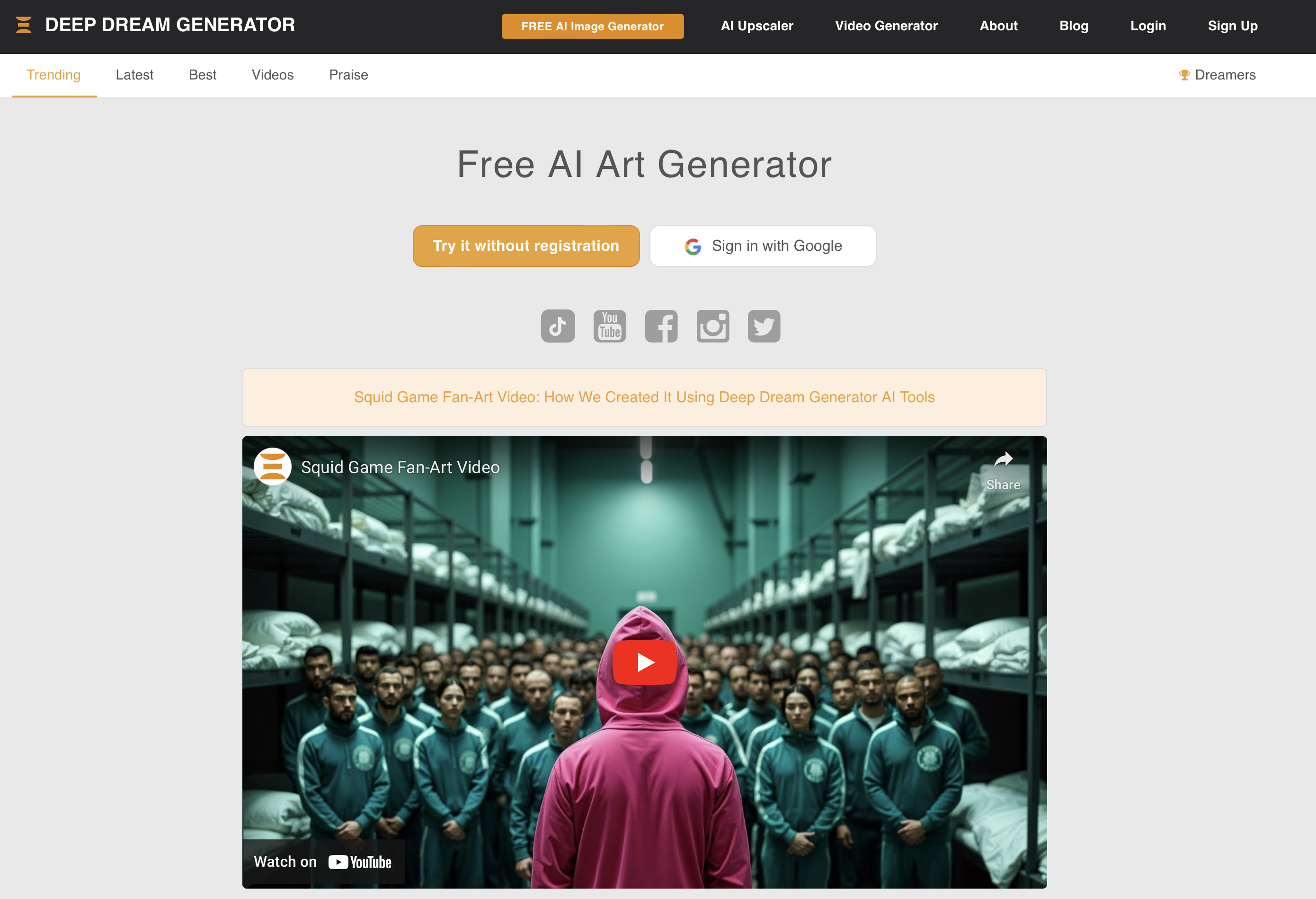What is DeepDream? Everything we know about the AI image tool
DeepDream, one of the earliest AI image creation tools, was created by a Google engineer and remains free

DeepDream is an AI-powered image-processing tool developed by a Google engineer that enhances patterns and textures in photos to create surreal, dreamlike visuals.
Originally designed to help researchers understand how neural networks interpret images, it has since gained popularity among artists and AI enthusiasts. The tool uses convolutional neural networks to detect and exaggerate patterns within an image, producing striking and often hallucinogenic effects.
By amplifying details in unexpected ways, DeepDream transforms ordinary images into bizarre, otherworldly compositions that wouldn’t be possible with traditional editing software.
This article was correct as of February 2025. AI tools are updated regularly and it is possible that some features have changed since this article was written. Some features may also only be available in certain countries.
- Try out DeepDream
- The best AI tools – ChatGPT, DeepL, Midjourney, and more
What is DeepDream?
DeepDream is an artificial neural network created by Google engineer Alexander Mordvintsev in 2015 as part of his deep learning research, and later relaunched in 2020 as an independent entity.
It was initially developed to help visualise how AI models process and recognise images by highlighting and enhancing specific features within a picture. The algorithm uses convolutional neural networks (CNNs) trained on large image datasets to detect patterns and amplify them.
DeepDream operates by identifying and exaggerating shapes within an image, sometimes creating bizarre or abstract compositions. Users can apply different intensity levels, leading to a range of artistic effects, from subtle enhancements to wildly distorted dreamscapes.
Are you a pro? Subscribe to our newsletter
Sign up to the TechRadar Pro newsletter to get all the top news, opinion, features and guidance your business needs to succeed!
While originally a research tool, DeepDream has found a niche among digital artists and experimental photographers who use it to push the boundaries of AI-assisted creativity.

What can you use DeepDream for?
DeepDream is widely used for creating unique, psychedelic artwork by enhancing patterns and textures in images. Artists and designers leverage it to produce dreamlike visuals that push the boundaries of traditional photo manipulation.
It’s also used in AI research to help visualise how neural networks process information and interpret images.
Some users experiment with DeepDream for abstract and surreal video generation, applying its effects frame by frame. Others use it as a creative tool to generate unusual textures and backgrounds for digital media projects.
What can’t you use DeepDream for?
DeepDream isn’t a general-purpose AI art generator like Midjourney or Stable Diffusion: it doesn’t create images from text prompts but instead modifies existing pictures by enhancing patterns, meaning it’s unsuitable for generating original artwork from scratch.
It’s also not ideal for precise or controlled editing, as the results can be unpredictable and highly exaggerated.
Additionally, DeepDream is a creative tool rather than a professional photo editor, meaning it lacks standard features like layer adjustments and retouching.
How much does DeepDream cost?
DeepDream is available through third-party tools and open-source implementations. Some platforms offer free access with limitations, while others charge for premium features.
For example, Deep Dream Generator, a popular online version, provides free usage with restrictions, while paid plans range from $9.99 (£8) to $39.99 (£32) per month.
These subscriptions offer higher image resolution, faster processing, and cloud storage. Alternatively, users with technical knowledge can run open-source DeepDream locally for free.
Where can you use DeepDream?
DeepDream is accessible through web-based platforms like Deep Dream Generator. Users with programming skills can also run Google’s open-source DeepDream software locally using Python and TensorFlow.
However, there are no official mobile or desktop apps, so most people rely on online services to generate DeepDream images.

Is DeepDream any good?
DeepDream is a fascinating tool for creating surreal, AI-generated artwork, but its usefulness depends on the user’s needs. For those interested in experimental and abstract imagery, it offers unique artistic possibilities.
However, the lack of control over its effects can be frustrating for users looking for precise editing.
While TechRadar Pro hasn’t reviewed DeepDream specifically, users like its ability to create striking visuals while noting its unpredictability.
Use DeepDream if
DeepDream is ideal if you enjoy experimenting with AI-generated abstract and surreal art. Its ability to enhance patterns in unique ways makes it a great tool for artistic expression.
It’s also useful for those interested in AI research and neural networks, as it provides a visual representation of how machines interpret images.
If you’re looking for a quick and easy way to stylise existing images with a dreamlike aesthetic, DeepDream offers an engaging and creative way to transform ordinary photos into something extraordinary.
Don’t use DeepDream if
If you need precise control over your edits, DeepDream is not the right tool.
The effects can be unpredictable, making it unsuitable for professional photo retouching or detailed design work. It also doesn’t generate images from scratch, so if you need an AI-powered tool for original artwork, platforms like Stable Diffusion or Midjourney are better suited.
Also consider
If you want an alternative AI art tool, DeepArt offers style transfer, letting you apply famous artistic styles to your images. For a more advanced AI-powered creative tool, Runway provides a suite of machine learning features, including AI-assisted video editing and style transformation.
Meanwhile, Stable Diffusion is a powerful text-to-image generator that allows greater control over artistic outputs, making it a strong choice for those who want to create entirely new visuals using AI.
Want to read more about DeepDream?
Max Slater-Robins has been writing about technology for nearly a decade at various outlets, covering the rise of the technology giants, trends in enterprise and SaaS companies, and much more besides. Originally from Suffolk, he currently lives in London and likes a good night out and walks in the countryside.
You must confirm your public display name before commenting
Please logout and then login again, you will then be prompted to enter your display name.